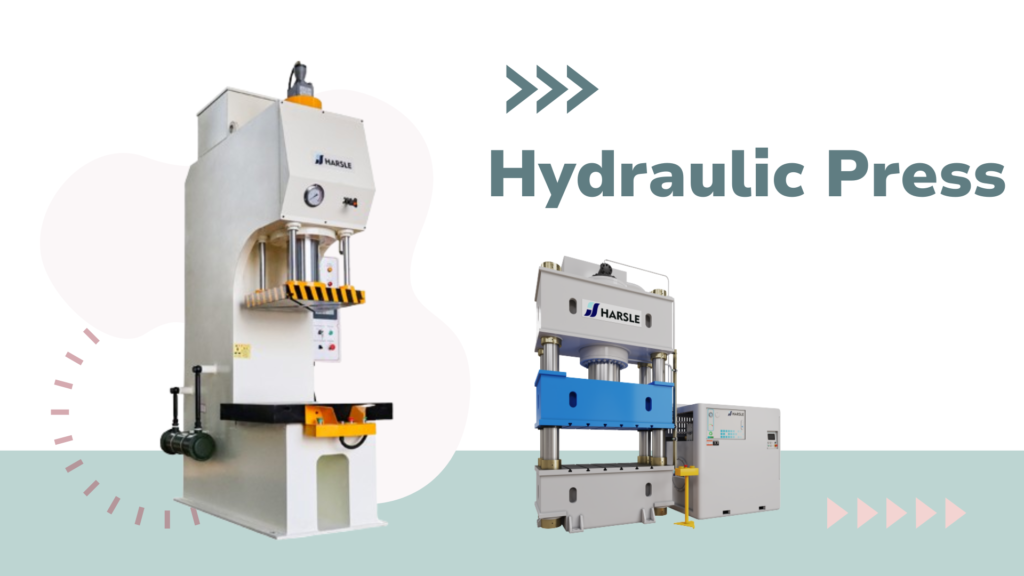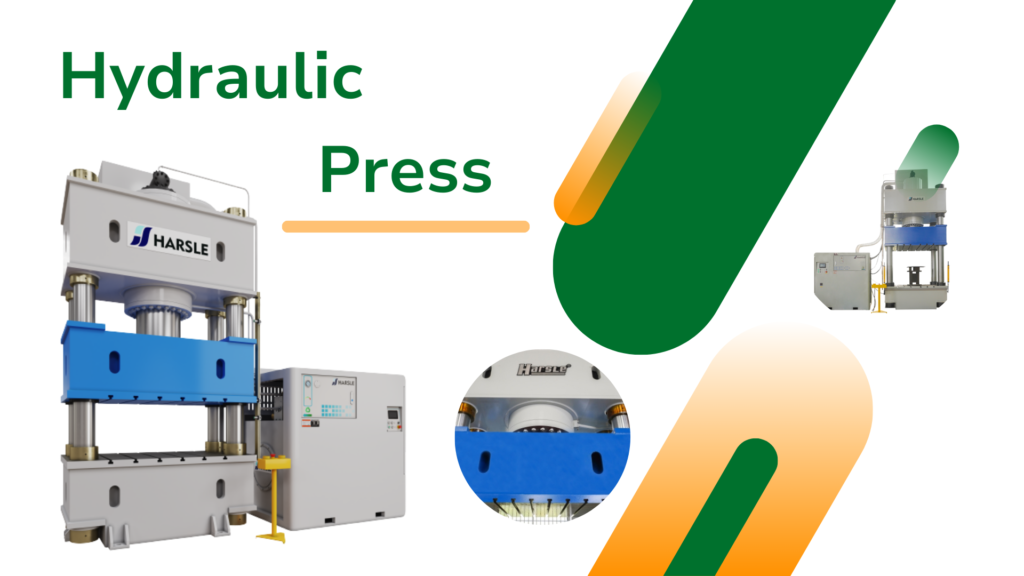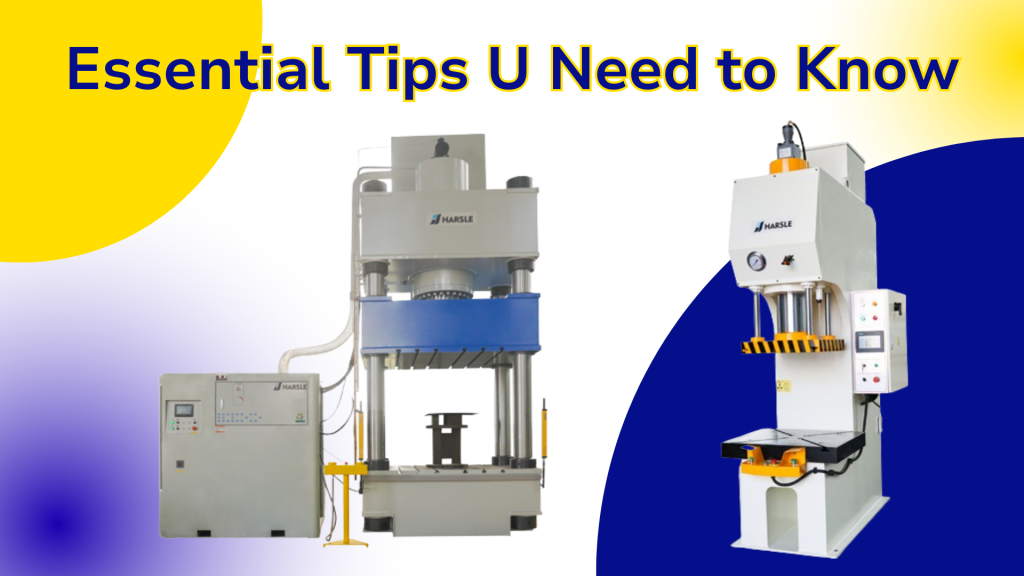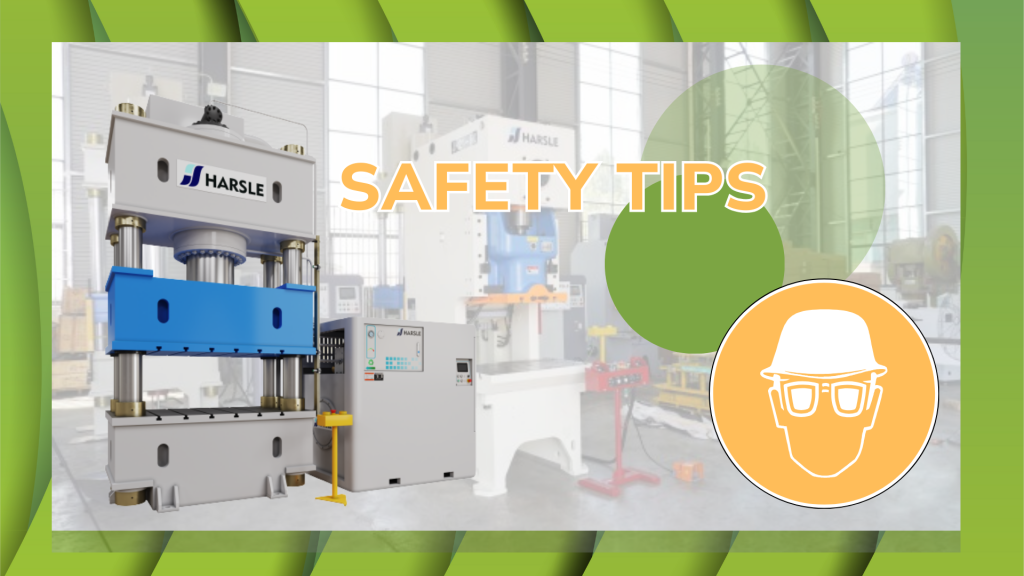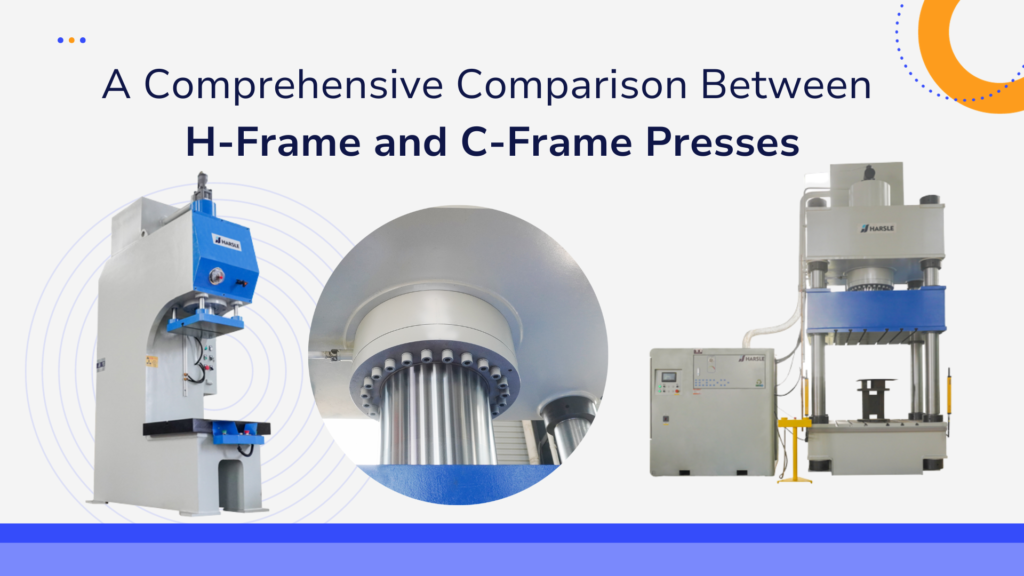Top 5 Hydraulic Press Applications Across Industries

Hydraulic presses have become essential tools in a wide range of industries due to their power, efficiency, and versatility. Unlike mechanical presses, hydraulic presses use fluid pressure to generate force, making them more flexible in terms of control, adaptability, and energy efficiency. Their ability to apply precise pressure across various materials and processes makes them indispensable in modern manufacturing. In this article, we’ll explore the top five applications of hydraulic presses across different industries, delving into their functions and benefits in metal forming, automotive, aerospace, plastics, and electronics.
1. Metal Forming and Fabrication

Overview of Metal Forming
Hydraulic presses are widely used in the metalworking industry for various forming and fabrication processes. These include deep drawing, punching, stamping, forging, and bending. The hydraulic press’s ability to deliver controlled force over a longer stroke distance makes it ideal for working with metals, particularly in forming complex shapes without causing material stress or deformation.
Deep Drawing
One of the most common applications of hydraulic presses in metal forming is deep drawing. This process involves shaping a flat sheet of metal into a deep, hollow shape, such as car body panels or kitchen sinks. A hydraulic press exerts consistent pressure, allowing the material to flow evenly into the die. This process ensures a smooth, wrinkle-free finish, which is essential for producing high-quality metal parts.
Punching and Stamping
Hydraulic presses are also used for punching and stamping operations, where the press forces a punch through a sheet of metal to create holes or cut out specific shapes. This process is vital in the manufacturing of metal components for electronics, automotive parts, and appliances. The precision and force control offered by these machines make them ideal for high-volume production lines, ensuring each part meets exact specifications.
Advantages in Metal Forming
The versatility of hydraulic presses allows them to handle various metal thicknesses, from thin sheets to thick plates. Moreover, they provide better control over force, speed, and stroke, which reduces material waste and enhances the quality of the final product. Metal fabricators benefit from their ability to perform multiple operations, such as bending and cutting, in a single press cycle.
2. Automotive Industry

Automotive Part Manufacturing
The automotive industry relies heavily on hydraulic presses for manufacturing a wide range of parts, including chassis components, body panels, engine parts, and transmission housings. They are used to shape, trim, and assemble these components, ensuring they meet the high safety and performance standards required in the automotive sector.
Forming Car Body Panels
One of the most crucial applications of hydraulic presses in the automotive industry is the forming of large car body panels, such as doors, hoods, and fenders. These parts require precision forming to ensure proper fit and finish. They provide the necessary force to shape these panels while maintaining the integrity of the material, resulting in high-quality, durable parts.
Forging Engine and Transmission Components
In addition to sheet metal forming, hydraulic presses are also used in the forging of engine and transmission components. The high pressure exerted by the press allows for the deformation of metal billets into complex shapes, which are then used to manufacture engine blocks, crankshafts, gears, and other critical components. This process ensures the strength and durability needed for automotive parts that withstand high stresses and temperatures.
Advantages in the Automotive Industry
Hydraulic presses offer the automotive industry several advantages, including the ability to produce high-strength components with complex geometries. They also improve production efficiency by enabling faster cycle times and reducing the need for secondary operations. As automotive manufacturers continue to push for lighter, more fuel-efficient vehicles, they are playing a key role in the development of lightweight, high-strength materials such as aluminum and advanced high-strength steels.
3. Aerospace Industry

High-Precision Forming
The aerospace industry demands precision and quality in the manufacturing of parts, as even the smallest defect can lead to catastrophic failures in flight. They are used to form high-strength alloys, composites, and other materials into complex shapes required for aircraft components such as wings, fuselages, and landing gear.
Forming Lightweight Components
Hydraulic presses are particularly useful in the forming of lightweight materials like titanium and aluminum, which are essential for reducing the weight of aircraft and improving fuel efficiency. These materials can be difficult to work with using traditional mechanical presses, but hydraulic presses offer the precise control needed to form them without cracking or warping.
Composite Materials and Aerospace Parts
Hydraulic presses are also essential in the aerospace industry for forming composite materials, which are increasingly used for their strength-to-weight ratio and resistance to corrosion. Composites, such as carbon fiber-reinforced plastics, are used in various aircraft parts, including fuselage sections, wings, and interior components. The controlled pressure and slow application of force provided by hydraulic presses allow these materials to be shaped and cured without damaging their structural integrity.
Advantages in Aerospace
In the aerospace industry, where precision is paramount, hydraulic presses ensure that parts are manufactured to exact specifications with minimal variation. The flexibility of hydraulic systems also allows for adjustments during the forming process, reducing the risk of material defects and ensuring consistent quality. Furthermore, hydraulic presses can handle a wide variety of materials, making them an essential tool for the production of advanced aerospace components.
4. Plastics and Rubber Processing

Plastic Molding and Forming
Hydraulic presses play a significant role in the plastic and rubber processing industries, particularly in molding and forming operations. In plastic molding, hydraulic presses are used to shape plastic resins into various products, such as automotive components, packaging materials, and consumer goods. The controlled pressure exerted by the press ensures uniformity in the molded parts, reducing material waste and improving product quality.
Rubber Vulcanization
In rubber processing, hydraulic presses are used for vulcanization, a process that strengthens rubber by adding sulfur and applying heat and pressure. This process is critical for manufacturing durable rubber products, such as tires, seals, gaskets, and conveyor belts. The precise control of pressure and temperature provided by hydraulic presses ensures that the vulcanization process is carried out efficiently, producing high-quality rubber products that meet stringent industry standards.
Compression Molding
Another common application of hydraulic presses in the plastics and rubber industries is compression molding. This process involves placing a preheated material, such as plastic or rubber, into a heated mold cavity, where the press applies pressure to shape the material. Compression molding is used to produce a wide range of products, including automotive components, electrical housings, and appliance parts. Hydraulic presses are ideal for this process due to their ability to maintain consistent pressure and heat throughout the molding cycle.
Advantages in Plastics and Rubber
Hydraulic presses offer precise control over force and pressure, which is essential for producing high-quality plastic and rubber products. They also allow for faster production cycles, increasing output and reducing costs. Additionally, hydraulic presses can accommodate larger molds and more complex designs, making them ideal for the mass production of plastic and rubber components.
5. Electronics Industry

PCB Manufacturing
The electronics industry uses hydraulic presses in the production of printed circuit boards (PCBs), which are the foundation of most electronic devices. Hydraulic presses are used to laminate multiple layers of conductive material onto a substrate, creating the intricate circuits needed for modern electronics. The press ensures even pressure is applied across the entire PCB, resulting in high-quality, reliable boards that meet the strict standards of the electronics industry.
Potting and Encapsulation
Hydraulic presses are also used in the potting and encapsulation of electronic components, where the press helps to enclose delicate components in protective materials such as epoxy or silicone. This process ensures that electronic components are shielded from environmental factors such as moisture, dust, and heat, which could otherwise damage the device.
Advantages in Electronics
Hydraulic presses provide the electronics industry with the precision and control needed to produce high-quality components. Their ability to apply consistent pressure is essential for processes like PCB lamination and potting, where even slight variations can lead to defects. Furthermore, the flexibility of hydraulic presses allows them to be used in a variety of applications, from small-scale component manufacturing to large-scale production runs.
Conclusion
Hydraulic presses are integral to a wide range of industries, offering flexibility, precision, and control in various manufacturing processes. Whether it’s forming complex metal components in the automotive and aerospace sectors, molding plastic parts, or producing high-quality electronic components, hydraulic presses play a crucial role in ensuring that products meet stringent quality standards. Their versatility and adaptability have made them indispensable across industries, and as technology continues to advance, the applications for hydraulic presses are likely to expand even further.




